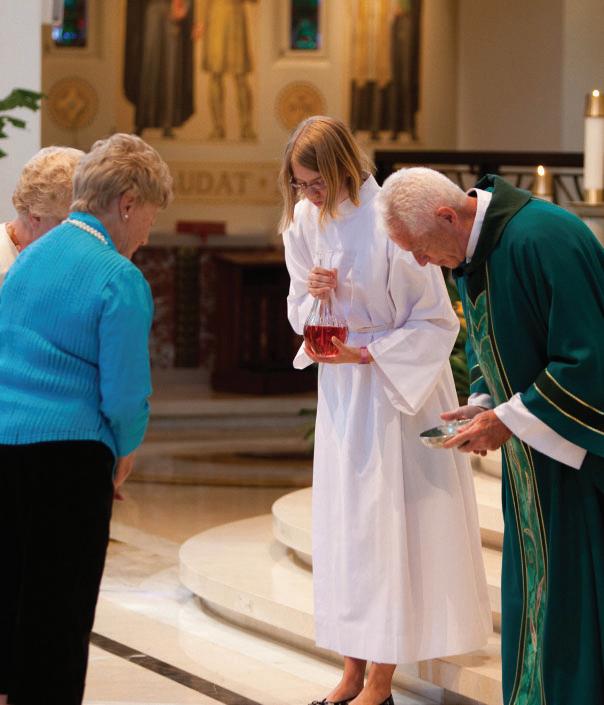
2 minute read
The Preparation of the Gifts
To set a table is a sign of hospitality. A beautiful table setting not only invites diners to feast at the banquet, but also gives reason to anticipate what is coming and to wait in hope. Setting a table is an essential aspect of the preparation of a meal.
Just as tables are set in homes and restaurants, the altar is set before the Eucharistic meal. The corporal, the chalice or chalices, the purificator, and the Missal are placed on the altar. Then the gifts for the poor, support for the needs of the Church, and the bread and the wine are brought forward.
Advertisement
From the earliest centuries, people have presented food and other items for the needy during Mass. The offerings of candles, oil, wheat, grapes, and other items connected the gifts offered in the Eucharist with gifts of Christian charity. It was customary to think of every gift to the Church and to the poor as a gift to God and to designate it as an offering. Many cultures still bring food items to the altar along with the bread and the wine.
Why are bread and wine brought to be consecrated for our Eucharistic food and drink? Those are the items that Jesus, as an observant Jew, used at the Last Supper when he commemorated the Passover meal with his disciples. These foods are still staples in the Mediterranean diet. When Jesus blessed the bread and wine at that ritual meal, he was telling the disciples that from then on, it would be his Passover that they would remember, celebrate, and share. Thus, the most sacred food of the Jewish Passover meal has become the very essence of the Eucharistic meal.
Jesus used bread and wine to signify his passing from death into new life. In the Mass, bread and wine are significant symbols of the death and Resurrection of Jesus. When grains of wheat are planted, they must die (John 12:24) in order to become the food we enjoy. Shafts of wheat are cut down and ground into flour before the dough is mixed to produce bread. Likewise, grapes are planted and harvested, crushed and fermented to become wine. Both of these processes involve a continual cycle of dying in order to become a new substance.
After the bread and wine are placed on the altar, the priest blesses them by giving thanks to God. The prayer that begins “Blessed are you, Lord God of all creation” comes from a Jewish table blessing, called berakah. A similar prayer is said over the cup. These prayers bless God for creation and sanctify human work, “fruit of the earth and work of human hands.”
The prayers remind us that we offer our human toil, the labor that comes from our hearts, along with the bread and wine to be transformed anew by God’s grace.


